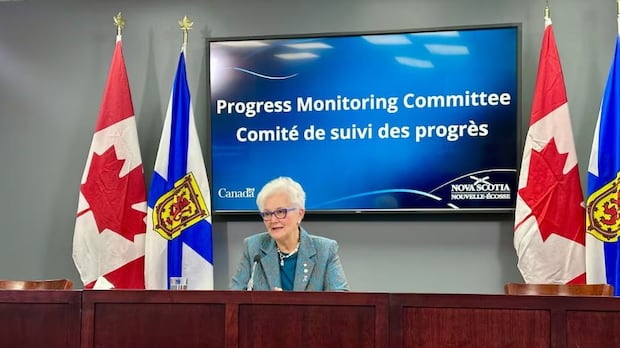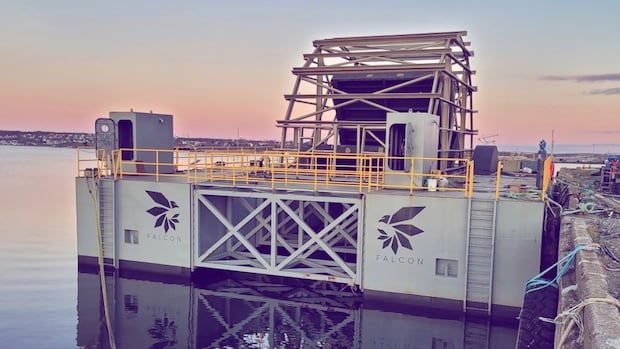N.B., N.S. strike deal with Ottawa on phasing out coal and creating a green energy grid by 2030

The governments of New Brunswick and Nova Scotia have received approval from the federal government for their plans to increase the use of renewable energy and stop using coal to generate electricity by 2030.
New Brunswick Premier Blaine Higgs, Nova Scotia Premier Tim Houston and federal Energy and Natural Resources Minister Jonathan Wilkinson made the announcement during a news conference at the end of a day of meetings in Ottawa on Monday.
“There’s enough agreement today that I’m optimistic that we can get something done that is to the benefit of Nova Scotians and ultimately to the benefit of Canadians,” Houston told reporters.
The plans advanced by the two provinces amount to a modified version of the Atlantic Loop, the massive project that would have seen improved transmission lines between the two provinces to allow for the importation of hydroelectric power from Quebec.
But mounting costs — the latest estimate pegs the project at $9 billion — and questions about how much energy is actually available from Quebec, led the provinces to pursue a pared-back version of the plan that would still see the creation of upgraded transmission lines, but more focus on renewable energy generated within the two provinces, including wind, solar and nuclear.
After months of acrimony between the two levels of government and terse comments shared through letters and news conferences, politicians struck a collaborative and positive tone on Monday, agreeing that the provinces could meet their environmental targets while being conscious of the financial implications for residents.
“That was a common theme throughout our meeting, that we have to find a way that people can afford to live and work in our respective provinces,” Higgs told reporters.
Initial funding announced
As part of Monday’s news conference, Wilkinson announced a first phase of funding for the two provinces while talks would continue about broader funding requirements. That includes:
-
$11.5 million for Nova Scotia to improve monitoring and automation of its electric grid.
-
$7 million to support pre-development work for the Arc small nuclear reactor at Point Lepreau, N.B.
-
$2 million to explore converting New Brunswick’s last coal-fired power plant in Belledune to “sustainably sourced” biomass.
-
$1 million for the port in Belledune to study establishing a green industrial hub.
Making good on the plans will cost much more than that — Nova Scotia estimates its plan will cost $2 billion — but Wilkinson said talks are already underway on how Ottawa can help.

When talks were focused on the Atlantic Loop, the premiers complained the Ottawa’s offer of loans would ultimately drive up power rates to a point that would not be affordable for residents of their respective provinces.
Wilkinson said Monday that funding options include some mechanisms that would have been a part of the Atlantic Loop, but the Canada Infrastructure Bank would likely be an option for the transmission lines from Onslow, N.S., to Salsbury, N.B. Investment tax credits would also be an option after they’re finalized by the federal government in the coming months.
“At the end of the day, the grid of the future needs to be one that is clean, but it also needs to be reliable and it also needs to be affordable,” said Wilkinson.
“There are other things that we may need to do, but I would say that a lot of the money is actually either in place or it will shortly be to actually have the federal government be a participant in supporting the work that needs to be done.”
Wilkinson said that when the provinces and Ottawa begin to talk about how to reach the 2035 target of producing net zero electricity, the remaining components of the Loop proposal could be revisited. By that time, however, the minister said New Brunswick and Nova Scotia could be energy exporters rather than importers as they pursue opportunities with nuclear power and offshore wind development, respectively.




